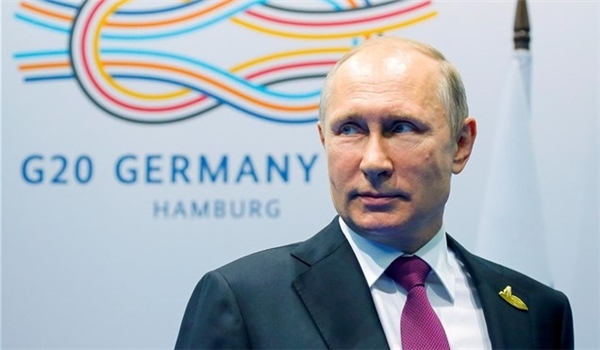
RNA - “I think the [US] position became more pragmatic. It doesn’t seem to have changed drastically [compared to the Barack Obama administration], but there’s an understanding that we can achieve a lot by joining forces,” he said at the G20 summit in Germany's Hamburg, RT reported.
The Russian President added added that this approach by Washington made possible the agreement on the Southern de-escalation zone in Syria, which was “one of the breakthroughs” during Friday’s talks with [Donald] Trump.
Putin stressed the importance of the de-escalation zones for maintaining the territorial integrity of the Syrian state after the conflict.
The de-escalations zones “should become a prototype of such territories, which would be able to cooperate with each other and with the official [government in] Damascus,” he explained.
The Russian leader addressed comments by US Secretary of State Rex Tillerson and other Washington officials, who insisted that the Syrian conflict would be not be solved while President Bashar Assad remains in power.
“Mr Tillerson is a very respected person and the bearer of a Russian order. He has been decorated with the Order of Friendship. We love and respect him. But he’s not a Syrian citizen, after all, and the future of Syria and the political future of President Assad should only be determined by the Syrian people,” he stressed.
The US and Russia have agreed on a ceasefire in Southwest Syria, set to take effect on July 9 at noon Damascus time.
“In this zone [in Southern Dara'a, Quneitra and Sweida provinces] the ceasefire regime will take effect on July 9 starting 12:00 Damascus time,” Lavrov said, following the landmark meeting between the Russian and US presidents on the fringes of the G20 summit.
“The US took an obligation that all the militant groups, located there, will comply with the ceasefire,” he added.
The ceasefire was agreed to by experts from Russia, the US and Jordan, who negotiated a memorandum on the creation of a de-escalation zone in Southwestern Syria at talks in Jordan’s capital, Amman.
“At first, the security around this de-escalation zone will be maintained with the help of Russian military police in coordination with the Jordanians and Americans,” Lavrov stressed.
The ceasefire agreement shows the US and Russia can work together on solving the Syrian crisis, US Secretary of State Rex Tillerson said at a separate news conference following the meeting between Vladimir Putin and Donald Trump.
"I think this is our first indication of the US and Russia being able to work together in Syria, and as a result of that we had a very lengthy discussion regarding other areas in Syria that we can continue to work together on to de-escalate the areas," Tillerson added.
The US and Russia had previously negotiated a ceasefire in Syria in September 2016, but it collapsed after US aircraft bombed a Syrian government position, leading Moscow to wonder if the Pentagon was undermining the State Department’s efforts.
The deal is separate from the draft agreement on de-escalation zones, which were to be created under a deal brokered earlier this year during Russia, Turkey and Iran-sponsored talks in Astana between the Syrian government and representatives of the armed opposition.
847/940